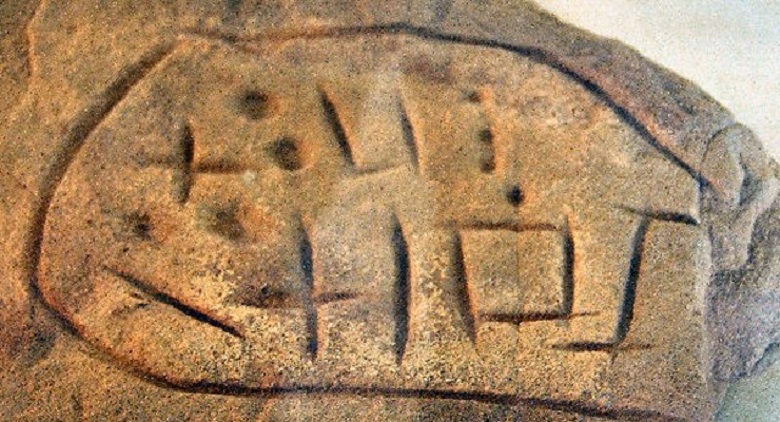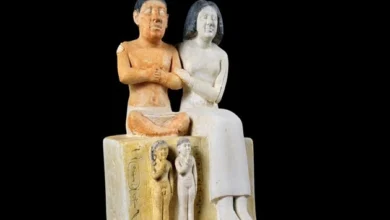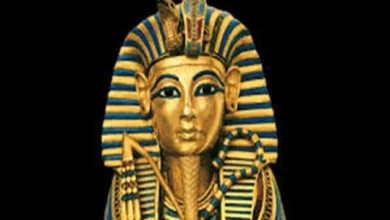Mysterious Garamantes: Why the ancient people of the Sahara called ‘great’?

Once the territory of the Sahara was a much more prosperous place for life – where dunes now occupied the space, there were agricultural lands, and instead of small salt reservoirs, there were large freshwater lakes. Then, thousands of years ago, the Garamantes lived in North Africa – a people that even scholars of antiquity called great.
Garamantes – the people who inhabited the desert
They were mysterious people, but still not one of those that appear only in legends. For the first time about the Garamantes – this is the name of the “great people” who inhabited a large territory of North Africa, wrote Herodotus. It was about 500 BC. The primary source of information about these people was the works of ancient authors – Strabo, Gaius Pliny the Elder, Tacitus, Claudius Ptolemy. Garamantes also mention in ancient Egyptian sources. In addition, the Garamantes left behind exciting specimens of rock art – they can see in the caves of Libya.
The territory in which the Garamantes lived is a relatively large part of North Africa with access to the Mediterranean coast: the historical regions of Tripolitania, Fezzan, Marmarica. The central city was Garama – nowadays, modern Jerma locate nearby. In addition to Garama, according to historians, about four thousand people lived; the Garamantes had seven more prominent cities and other small settlements.

Garamantes mastered oases and wadis – drying up, temporary river beds; there arranged irrigation systems, arable land, pastures, orchards. In terms of the organization of life, the Garamantes were seriously superior to the African tribes and even, perhaps, Egypt. They sometimes entered, apparently, in military conflicts. True, the study of the remains of the Garamantes, carried out by anthropologists, made it possible to establish that the representatives of these people did not engage in war on an ongoing basis – the features of the skeleton gave evidence to this.
Garamantes built adobe houses and even palaces, cultivated grapes, figs, barley, and wheat. Apparently, as in neighboring Egypt – the country of the Garamantes – used slave labor. There was active trade with other states – most likely, the functioning of the trans-Saharan caravan route is also one of the merits of this people. To the north, to the Mediterranean countries, they brought slaves, gold, salt, wheat. They bought wine, olive oil, fabrics and dishes, weapons.
Such was the life of this people long before Herodotus; for thousands of years, the Garamantes were the masters of vast lands in northern Africa, controlled a significant part of the Mediterranean coast, conducted trade, improved economic activities – until some time nothing threatened the existence of this ancient state.
“People of the Sea”
Very little is known to modern scientists about the kingdom of the Garamantes. Generally speaking, until the middle of the last century, these people, whose name find in ancient sources, was considered a small tribe of the desert.
Only archaeological excavations, begun in the sixties, showed that we are talking about a highly developed ancient civilization. It is not easy to find any definite information about the Garamantes – one has to be content with only theories because scientists do not yet have data on either the language or the writing of the Garamantes. However, there are some hypotheses regarding the found rock paintings. There is no information about important historical events for these people; it does not even know about these people’s origin.
The Garamantes are one of the “Sea Peoples” who arrived on the African continent in the middle of the 2nd millennium BC. These happened when the ancient world seizes a crisis associated with the change of the Bronze Age to the Iron Age. “Sea Peoples” arrived by ship to the coast of Africa, then moving inland. Perhaps it was as a result of such migration that the state of the Garamantes appeared.
The head of Garamantes was the king; however, until the onset of the era of the Roman conquests, it was not possible to find any specific information about the rulers of this state. With the expansion of Rome in North Africa, the Garamantes state lost its independence, but the rule of the Romans was somewhat unstable. Garamantes supported the uprisings against the empire while not entering into confrontation with the conquerors.
What is known and unknown about Garamantes
Future generations of archaeologists can only envy – there are still many discoveries to be made in the wake of the existence of the Garamantes. Something like this might once look like the study of the civilization of Ancient Egypt, mysterious for Europeans.
In the meantime, it remains to build theories and make assumptions that are difficult to prove and disprove. Perhaps the Qarun lake is part of the famous Faiyum oasis, was a human-made construction of Garamantes, created to provide settlements with fresh water. This lake, shallow for unknown reasons, is salty, its water level is below sea level.
In any case, the appearance in this part of Africa of underground galleries and water moved to associate with the Garamantes. Hidden from the scorching sun, these water streams protect from drying out, and the length of such communications could be several kilometers. Some of them – and more than two hundred were discovered – operated until the 20th century – so outstanding was the engineers’ engineering genius, who calculated everything to the smallest detail, including the level of elevation changes that contributed to water movement.
The Garamantes believes in rock carvings, were fair-skinned, tall people dressed in white clothes; they owned a bow, decorated their hair with ostrich feathers, and wore sandals on their feet. Next to the person they depicted, it is interesting that not camels, which tame later, but other draft animals – donkeys, horses, mules. The beliefs of the Garamantes consider close to those of the Egyptians.

The Roman rule did not destroy Garamantes, and she did not have to fear small African tribes. But several centuries after the fall of the great European empire, when the time for the Arab conquests came, the history of the Garamantes came to an end. In 668, as the chronicles say, Garama was captured by the Arabs without a fight, the last king was shackled and sent to Egypt. The Garamantes disappeared, gradually mingling with other peoples.

It believes that the Tuaregs, the blue people of the Sahara, living under matriarchy, became the descendants of the Garamantes. Still, even here, there is no single point of view among scientists.





The Tuareg destroyed the civilization of the ancient Garama peoples who came to be called Wa’n’gara and Germa or Jerma Songhai in other parts of Africa. The true Tuareg did not step down from their camels and use of the plough which was held in contempt by such nomads. The people of Garama were considered the same people that founded the Songhai and old Ghana civilizations. Thank you for your post.